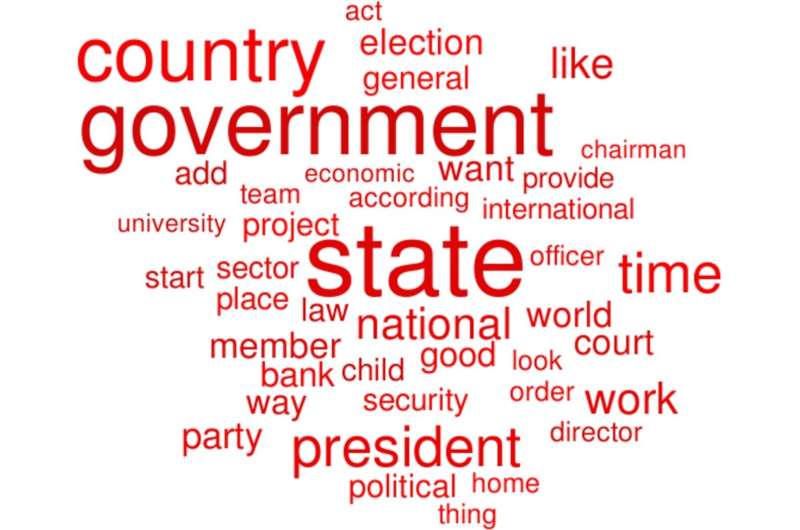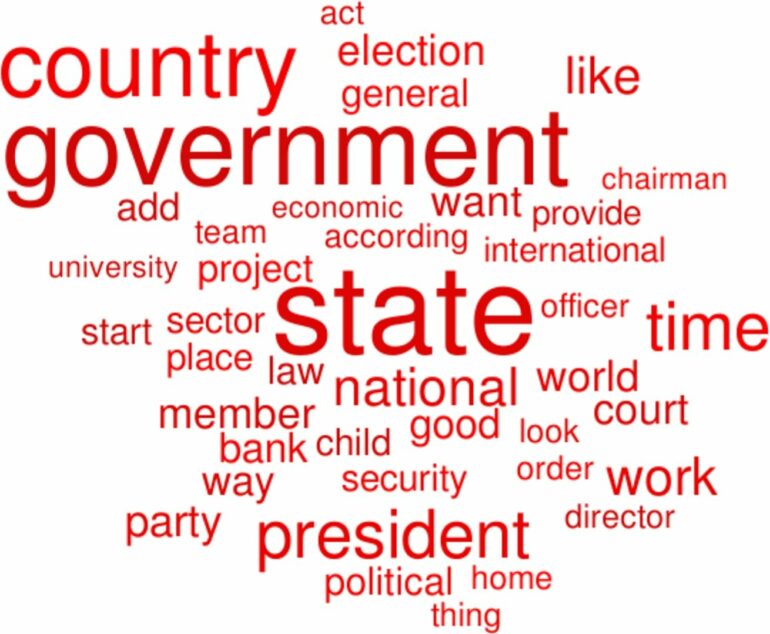By analyzing the frequency of certain words within mainstream news media from any country, a machine learning algorithm can produce a quantitative “peace index” that captures the level of peace within that country, according to a study published in the open-access journal PLOS ONE by Larry Liebovitch and Peter T. Coleman of Columbia University, US, and colleagues.
The language used in media both reflects a culture’s view of the world and influences how people within the culture think and act. “Hate speech” can mobilize violence and destruction. Much less is known about how “peace speech” characterizes peaceful cultures and may help to generate or sustain peace.
In the new study, Liebovitch and colleagues used five previously developed and highly respected peace indices to capture levels of peace within 18 countries classified as high-peace, intermediate-peace or low-peace. They then collected 723,574 media articles originating from these countries; all were written by local sources and published online in English.
Using only the high-peace and low-peace countries, the researchers used a machine learning model to identify words whose use in the media was associated with levels of peace.
Overall, lower-peace countries were characterized by the higher prevalence of words related to government, order, control and fear (such as government, state, law, security and court), while higher-peace countries were characterized by an increased prevalence of words related to optimism for the future and fun (such as time, like, home, believe and game).
When the researchers applied the trained machine learning model to media from the intermediate-peace countries that had not originally been included, the model correctly identified the countries as having intermediate levels of peace.

Words in news media more associated with less peaceful countries. © Larry S. Liebovitch, CC-BY 4.0 (creativecommons.org/licenses/by/4.0/)
The authors point out that their data was biased in that all the sources were in English, which means the authors’ model is more reliable in evaluating countries where English is a more common language for news communication. Additionally, the method may include bias already integrated into the preconceived peace indices used in the work.
Despite the limitations, the authors conclude that the data serves as a good starting point to further explore the linguistic differences between lower-peace and high-peace cultures.
The authors add, “We used machine learning to find the words in local news media that best indicate the level of peace in a country. In less peaceful countries, news media focus on government and social control, while in more peaceful countries, its focus is on personal preferences and the activities of everyday life. We also found that high-peace countries evidenced a much higher level of diversity of terms than low-peace countries.”
More information:
Word differences in news media of lower and higher peace countries revealed by natural language processing and machine learning, PLoS ONE (2023). DOI: 10.1371/journal.pone.0292604 , journals.plos.org/plosone/arti … journal.pone.0292604
Provided by
Public Library of Science
Citation:
‘Peace speech’ in the media characterizes a country’s peaceful culture, suggests new study (2023, November 1)
